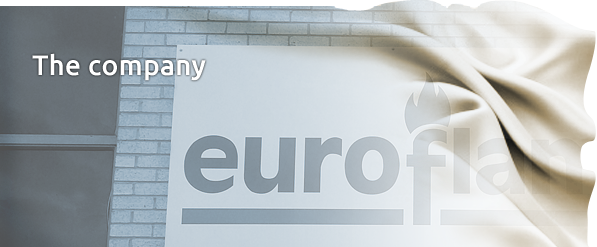Yesterday, today, tomorrow
History: starting out
Established in 1990 by Sixten & Casey Ltd, Blendworth Fabrics, based on the South Coast, about 1.30 hours from London. In March of 2006 the company was taken over by Bridgwater Bros Holdings Ltd. the owners of Essex Flameproofing Ltd. Officially we are;
Essex Flameproofing Ltd, T/A Euroflam
The two companies have a combined 40 years + experience in textile treatments, with a capacity now in excess of 1 million metres a year. We offer a very wide range of treatments, Flame Retarding, for both Domestic & Contract uses, Water Proofing, Soil & Stain and Anti-Microbial and several others as required.
We number the leading Fabric Wholesalers, Upholsterers, Retailers, Manufacturers, Mills, Weavers, Interior Designers and Hotel Groups amongst our client list. Fabrics treated by us can be found in all four corners of the Globe.
We are also founder members of FRETWORK fretwork@btinternet.com
Fretwork works to promote and protect the interests of companies involved in the flame retardant textile supply chain.
We do this by:
Representing our members at UK, European and International Committees.?Working with UK and European bodies that regulate flame retardant textiles.?Keeping our members up to date on issues and legislation that may affect them.
Fretwork was set up following the demise of the Textile Finishers Association and the TEXFLAM Group. Without these bodies there was no organisation looking after the collective interests of companies involved in the supply and application of flame retardant treatments for textiles.
An example of the work Fretwork does is illustrated by the number of meetings we have held in discussing the use of Deca.
Deca is known as DecaBromoDiphenyl Ether, Bis (Pentabromophenyl) Ether (CAS No. 1163-19-5). It is often referred to as DecaBDE but we commonly refer to it in the trade as “Deca”. It is basically a large organic molecule with 10 atoms of bromine which provide its flame retardant properties.
Deca is about to go, under REACH, on the SVHC list, (substance of very high concern), which effectively means there will be restrictions on how and where we use it and implications for the supply chain. See Fretwork website for fuller details. (link to Fretwork website).
Today: Standards and Conformity
Suitable fabrics can be treated to conform to current U.K. Standards for; upholstery, curtains, bedspreads and walling. Likewise some European and International standards can be achieved on certain fabrics, but may need independent testing to verify this, as the test equipment is different from that used within the U.K.
We work closely with our compound suppliers to ensure the latest developments in treatments are trailed and tested to ensure we can treat the very wide range of fabrics in today’s market place. Suitability trails and test are free of charge, but independent tests are subject to a charge.
REACH
The environmental issues regarding the use of any chemicals are always at the fore front of our thinking, all of our compounds and their components are cover by the E.U. REACH requirements, we also follow a voluntary ‘code of practice’ to unsure safe use of the compounds, minimising the impact on the environment and on human health.
SUITABILITY
Not all fibres can be treated, particularly for Flame Retarding, some synthetic yarns or blends can prove difficult, in particular; Acrylic, Olefin, Acetate Polypropylene and some Polyesters. Dyestuffs and Weight can also have an influence. Some synthetic yarns once treated can have a ‘feel’ to them once treated and the ‘handle’ can also be affected. We strongly recommend pre-trailing before orders are treated for both effectiveness of the FR and the look and feel on these types of fabrics.
WIDTHS
from 1.40 to 1.60 meters are OK for us to treat, double widths we cannot treat, but we do have an associate company who can assist when required.
No treatment; trimmings, piping, tassels and braiding are not normally required to be treated and some can come already FR. Fabrics from inherent FR polyester yarns, are already flame retardant, but may not be suitable for all Standards.
TREATMENT METHODS
BACK-COATING
A traditional method for Upholstery, a translucent coating, NDF, non Deca formular, which maintains the feel & handle of the treated fabric. Or a more traditional white back-coat for those more ‘difficult’ fabrics, high in synthetics, currently contains Deca.
IMPREGNATION
Normal method for curtain, bedspread and walling as well as soil & stain, the fabrics pass through the compound, water based, then ‘mangled’ by 2 rubber rollers under pressure before drying and curing. This method can affect ‘pile fabrics’ we recommend trialing before orders are treated.
Tomorrow: New Developments
We are working with our Compounders to ensure we keep updated on their developments, the current Non-Deca, NDF compound, is proving very popular with our upholstery customers, the improved handle and the lack of ‘strike through’ on light weight open weave fabrics is appreciated. The compounders are working on alternatives to Deca, for those more difficult high synthetics fabrics, which Deca treats so well! These are potentially more expensive to produce, but we are hoping this will not affect are prices just yet. (Link to NDF page)
Washable FR Impregnation for Upholstery Fabrics, we are currently trailing an advanced version of our ACE compound for high natural fibre fabrics, this will also benefit from the addition of a quality water, oil and stain repellent as an all I one treatment. (Link to ACEW)
A Fluorine Free advanced Water Proofing compound is being added to the stable, ( FFW-Eco) Fluorine has the potential for inclusion on the SVHC, under REACH, some leading fashion brands are already considering a move away from the current Fluoro-Carbons, the one disadvantage is that it is specific to water and not so effective against oil based staining. (Link to info FFW-Eco)

